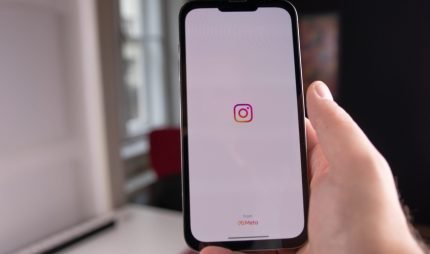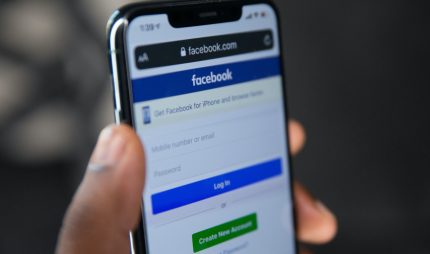A question for all ecommerce business owners: Have you mapped out your holiday marketing strategy yet? If not, it’s fair to say that you’re probably falling behind and should try to make up ground as quickly as possible.
It’s often said that the holidays come earlier every year. But this year, that isn’t just an observation about consumer excitement or corporate greed, or any of the familiar drivers of an early push for Christmas shopping and holiday planning. As the world continues its struggle to recover from the pandemic, there are uniquely good reasons to get an early start on a holiday marketing strategy.
Supply Chains and Vacant Positions
In recent weeks, the media has been practically overwhelmed with stories that detail and explain the backups in the global supply chain. Without getting into all the underlying factors, suffice it to say that Covid-19 has created far-reaching and long-lasting interruptions to the way companies are used to doing business. And that is resulting in scarcity of certain products, as well as certain components that are needed in order to secure the availability of other products.
Add to that the fact that the dynamics of the American workforce have shifted dramatically, with many workers still worried about returning to certain sectors and others keen to exploit their increased bargaining power. Together, these issues are sure to result in significant difficulties in keeping up with orders at all levels during the holiday shopping season.
Many of the aforementioned news reports have specifically urged consumers to get an early start on their shopping and to be prepared for various items to be on back order if they don’t secure them on time. Inevitably, some consumers will have jumped on that recommendation while others will continue putting things off as they would in other years.
Any business that hasn’t already initiated its holiday marketing strategy is at risk of losing out on the first group. The latter group is still fertile ground for such a strategy, but the businesses that end up targeting it may have to adopt a different strategy for last-minute shoppers than they would have in previous years.
Holiday Branding, General and Specific
As a matter of fact, regardless of whether or not you’re already putting your holiday marketing strategy into practice, there’s a good chance you’ll have to make adjustments as you learn about consumer expectations and market realities in this new (hopefully temporary) reality.
The people who are shopping early this year are not necessarily the same people who shop early every year. Therefore, companies targeting them should probably make plans for their digital marketing team to analyze available data as those people start showing off their consumer behavior. Those companies may then gain significant insights about their target demographics, which could change their holiday marketing strategy.
You may think this undermines the point about getting started early, but even if you have to make adjustments based on new data, it’s still better for those adjustments to accommodate a preexisting plan than it is for you to try to cobble together an entirely new plan based solely on the new data you’ve acquired.
Part of your holiday marketing strategy is simply branding. There should be a message that you want to get out for the holidays in general. It may have to do with family, or charitable sentiment, or religious values, or whatever else you think your consumers will respond to around the end of the year. That isn’t necessarily identical with the message you need to get out for this holiday season in particular, but it does represent a reliable starting point.
As new realities unfold, you may have to add and subtract elements of your more general holiday marketing strategy. But barring something catastrophic or revelatory, you won’t have to remake the strategy altogether. If coronavirus infection rates spike ahead of the holidays and people feel the need to keep separate once again, a message of family can be adjusted to highlight that separation. And if supply chain and workforce issues remain serious enough to damage people’s finances over the long term, holiday branding can be adjusted to focus on the perceived increase in value of charitable or religious sentiment.
Marketing amidst Scarcity
Beyond establishing a message that is appropriate for the moment, a company’s current holiday marketing strategy must, of course, account for potential scarcity. Ways of doing so might involve incentivizing consumers to place orders early, and preparing them for delays or “out of stock” notices that might emerge later on.
These tactics will work best on those consumers who heeded the advice to get started early, themselves. For the rest, a holiday marketing strategy may benefit from promoting certain items specifically as alternatives to those that have sold out. An ecommerce company and its digital marketing team should be able to start making assessments right now about what is most likely to run out, and what is most likely to appeal to those consumers who have missed out.
Of course, neither these alternatives nor messages warning consumers of potential loss of inventory will do very much to stave off the frustration that consumers are likely to feel at having so much different a holiday shopping experience than they’re used to. That being the case, each company’s holiday marketing strategy should probably put extra effort into making the consumer feel valued and appreciated.
Things like personal messages and holiday-specific packaging can go a long way toward conveying this sentiment and reminding the consumer that your company is doing its best to make a difficult situation less difficult. Although surpluses of any item may be rare this year, when you identify them it may even prove worthwhile to offer deep discounts or free gifts with certain other purchases. Those sorts of incentives may seem more costly in the midst of market disruptions, but for that very reason, they may pay off even more effectively over the long term, by fostering brand loyalty before things go back to normal.



